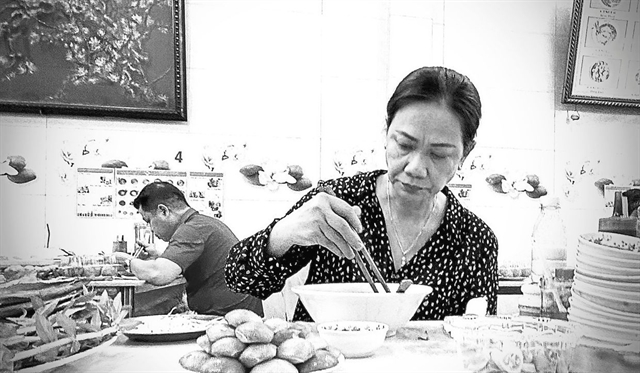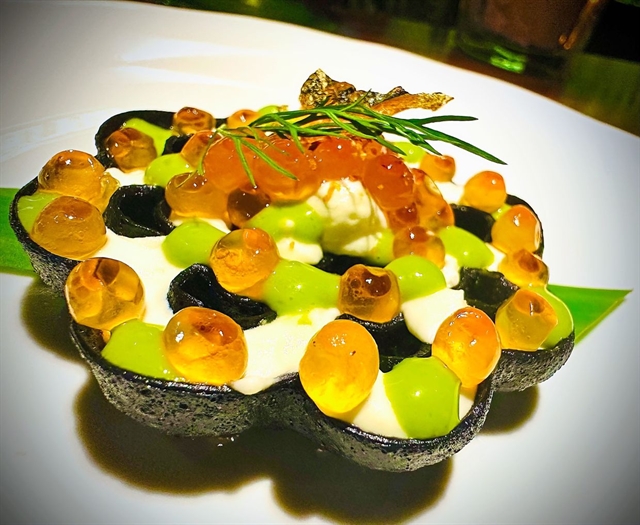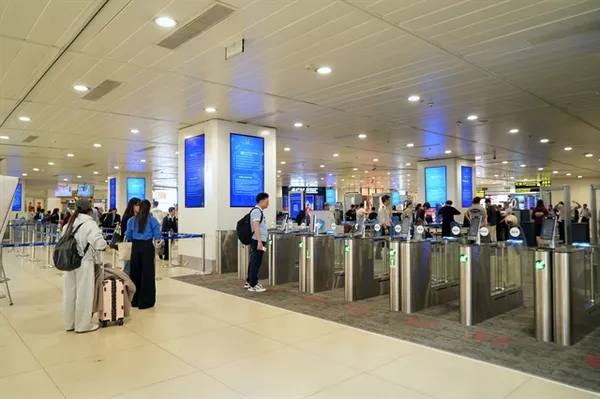 Life & Style
Life & Style


|
| Wonderful souffle at La Villa, which was included in Vietnam’s first Michelin Guide last year. The Star/ANN Photos |
HCM CITY Venturing deeper into the heart and soul of Sài Gòn, one encounters a city that pulsates with the energy of a thousand stories, each one a thread in the rich tapestry of Việt Nam’s history. This is a place where the echoes of the past are not mere whispers but vibrant, living presences that shape the city’s present and future.
The roots of Sài Gòn, or HCM City, stretch deep into the annals of history, back to a time when it was a mere collection of fishing villages, known collectively as Prey Nokor. Its transformation began in earnest in the 17th century when Vietnamese settlers, pushing southward in a movement known as “Nam Tiến”, began to inhabit the area.
However, it was the arrival of the French in the 19th century that truly marked the beginning of a new era for Saigon, turning it into the pearl of their Indo-Chinese empire.
The French influence on Sài Gòn is undeniable, woven into the fabric of the city’s architecture, language, and, most indelibly, its cuisine. The colonial period introduced a plethora of ingredients and culinary techniques that would forever alter the Vietnamese palate. Baguettes, paté, and coffee became staples, merging seamlessly with the local flavours to create dishes that are quintessentially Vietnamese yet bear the unmistakable touch of French sophistication.
Yet, Sài Gòn’s culinary heritage is not just a tale of colonial influence. It is also a story of resilience and innovation, a testament to the city’s ability to absorb foreign elements and make them its own. This is evident in the evolution of its street food scene, a vibrant and dynamic expression of the city’s spirit.
From the humble beginnings of roadside stalls to the bustling night markets that now define the urban landscape, Sài Gòn’s street food is a celebration of creativity and adaptation.

|
| Phở Hòa Pasteur has a Michelin Bib Gourmand rating. |
The Việt Nam War, or the American War as it’s known locally, brought profound changes to Sài Gòn, shaping not only its political landscape but also its cultural and culinary identity. The influx of American soldiers introduced new ingredients and dishes to the city, further diversifying its culinary repertoire.
However, it was the resilience of the Vietnamese people during and after the war that truly defined Sài Gòn’s food scene, as they rebuilt their lives and their city, one dish at a time.
In the years that followed, Sài Gòn continued to evolve, embracing globalisation while fiercely guarding its heritage. This delicate balance is reflected in its culinary scene, where traditional dishes like bún chả and cà phê sữa đá coexist with international cuisines and modern culinary innovations.
As one navigates through the maze of Sài Gòn’s streets, it becomes clear that the city is not just a place but a living history book, each chapter flavoured with its own unique spices.
The story of Phở Hòa Pasteur is not merely about a bowl of phở, it’s about the generations of Vietnamese who have gathered around its tables, sharing stories and dreams over steaming broth.
The tale of the Satay House in Thuận An is not just about the fusion of flavours but about the courage to bridge worlds, to create a space where cultures can meet and meld.
Nhậu Nhậu’s inventive cocktails are more than just drinks – they’re a bold declaration of Sài Gòn’s place in the modern world, a city that respects its traditions but is not afraid to experiment, to push boundaries.

|
| A bánh mì at Anan, a one Michelin-starred restaurant. |
Anan and La Villa represent the pinnacle of this culinary evolution, blending the best of Việt Nam’s past and present to create dining experiences that are as memorable as they are delicious.
The bánh mì kẹp thịt Kebab, a humble yet revolutionary offering, stands as a symbol of Saigon’s unyielding spirit, a reminder that even the simplest dishes can tell the most compelling stories when infused with creativity and passion.
Sài Gòn’s journey from Prey Nokor to the bustling metropolis it is today is a saga of transformation and resilience, a city that has seen empires rise and fall, survived wars and upheavals, and yet has emerged stronger, more vibrant, and more diverse. It is a city that wears its history proudly, not as a burden but as a source of strength and inspiration.

|
| Anan is owned by local chef Peter Cường Franklin, who worked abroad extensively before returning to his home country. |
In the end, Sài Gòn is not just a city, it’s an experience, a mosaic of human endeavour, and a celebration of the indomitable Vietnamese spirit. It’s a place where every street, every dish, and every face tells a story of survival, adaptation, and triumph.
And as one leaves Sài Gòn, it becomes clear that what one has experienced is not just the flavours of its cuisine but the very essence of Việt Nam itself – a land of beauty, complexity, and an enduring zest for life. The Star/ANN




